Lets understand about
The Paint
Paint is any liquid, liquefiable, or mastic composition which, after application to a substrate in a thin layer, is converted to a solid film. It is most commonly used to protect, color or provide texture.
The formation of protective coatings by paints & distemper involves the production of films of the order of 1 mm (1/1000 inch) thick on surfaces. In general, the requirements for such surface coatings include the following:
• Hiding power or covering power
• Color
• Weather resistance
• Wash ability
• Glass
• Anti corrosive properties
• Consistency suited to application (brushing , dip, spraying or roller coating)
• Non toxicity
• Low cost
Paint Manufacturing Process
The paint manufacturing process is a complex and intricate one that involves a wide range of steps and materials to produce a high-quality product. From the selection of raw materials to the mixing and blending of various components, each step in the process plays a crucial role in determining the final characteristics of the paint. In this article, we will take a closer look at the various stages involved in the paint manufacturing process and how they come together to create a durable and attractive coating for a wide range of surfaces.
Typical paint manufacturer process flow
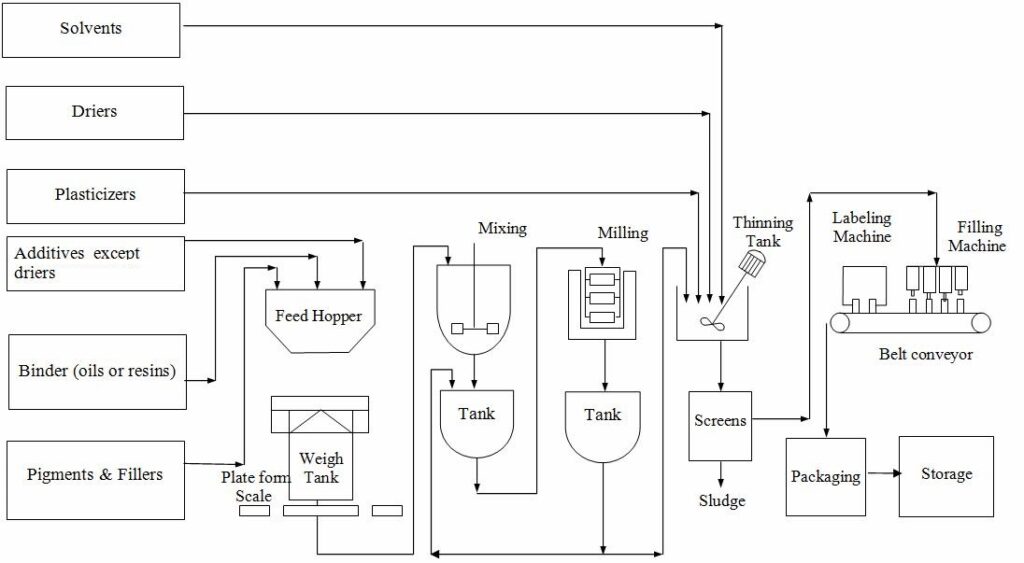
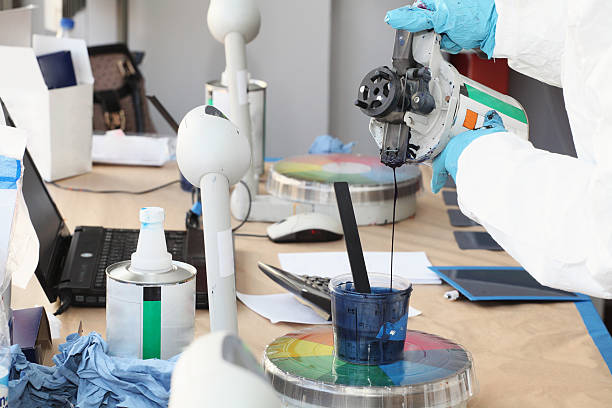
Customer requirement testing
Before production starts each separate paint has a unique formula developed for it in the laboratory. During this development stage the paint's quality aspects are comprehensively tested. The laboratory is also responsible for inspecting the raw materials before they go into the product and monitoring the quality during the production process. In addition to the above activities, particular attention is also given to research into new raw materials and paint systems.
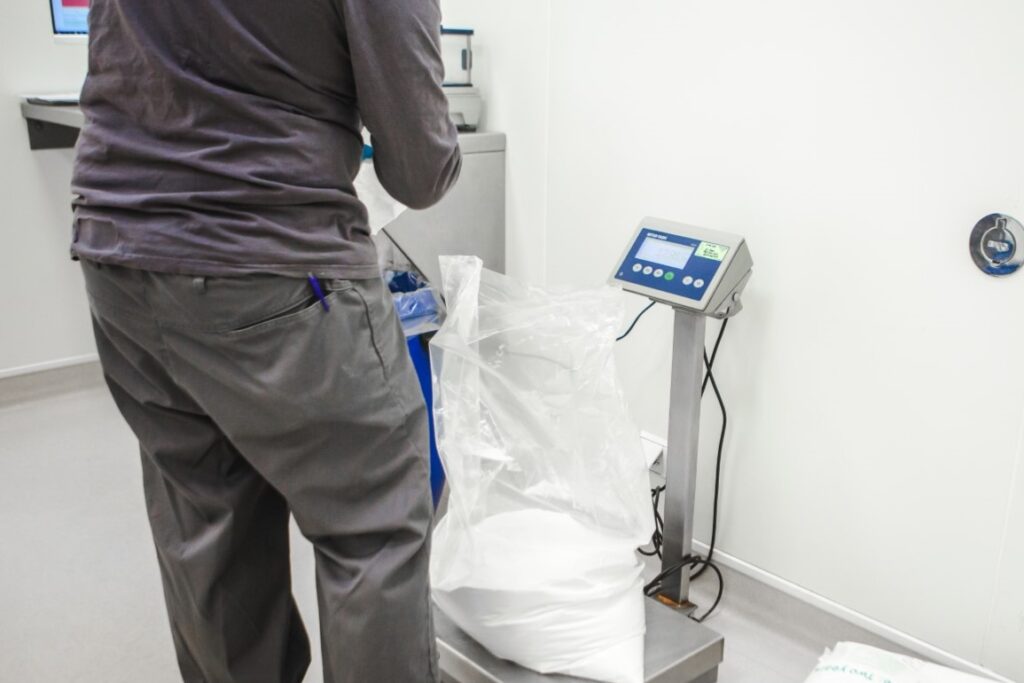
Weighing of raw materials
The central warehouse stores all the dry raw materials. This includes pigments and extenders, as well as binders such as dextrine and Gum arabic which is later made liquid through dilution. At the start of the production process the dry raw materials are weighed here accurately to the gram and prepared for transport to the next department, the pre-mixing department. The pre-mixing department stores the liquid binders and additives. The correct amount is tapped off, after which the weighed dry raw materials are added. As small amounts of dry raw materials are left behind in the sacks during this process, the paint has to be checked at each subsequent production step against standards for the relevant product according to colour and viscosity, and is adjusted if necessary.
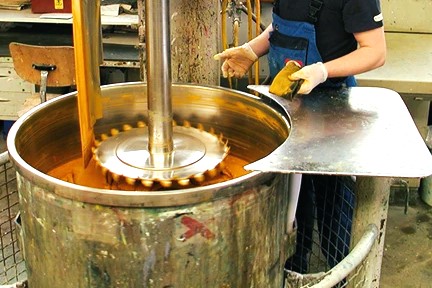
Dispersion of pigments in resins
Pigments are insoluble in the binder. They therefore have to be regularly dispersed in the binder, that is to say finely distributed. This dispersal occurs in two steps: first through pre-mixing with a mixer and then the final fineness is determined with a triple roll mill.
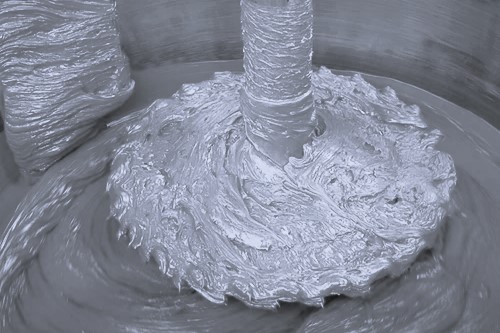
Pre-mixing
The pigments are supplied in dry powder form, with the pigment components held together in clusters. During the pre-mixing these are turned to smaller clusters and homogenously distributed throughout the binder. The tinting strength of the paint is now relatively low, but this will increase as the pigment is ground finer in the next production phase.
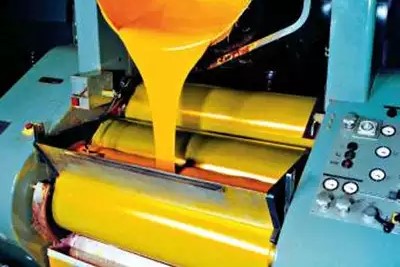
Grinding the pigments
Certain pigments are more difficult to disperse and require ball milling, bead milling or bar milling.
Ball mills are used for small batches of difficult to disperse mill-bases. Ball mills are large porcelain lined rotating drums containing golf ball sized porcelain balls. Rolling and tumbling of the balls provides sufficient force to break up agglomerates.
Bead mills are used for large batches and can maintain semi-continuous output. Operation is similar to a ball mill but the vessel is smaller and balls are 3mm diameter zirconium dioxide beads, and mixing is at a higher speed producing more rapid output.
Bar mills are especially useful for highly viscous (thick) mill-bases. The mill-base is forced through a small clearance between a rotating water cooled roller and a bar pushed against the roller.
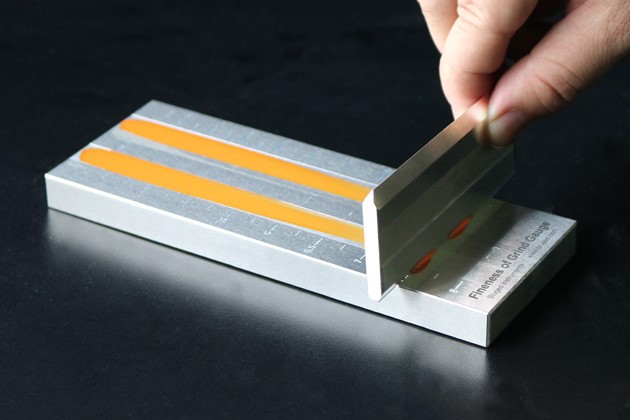
Fineness inspection pigments partical
The distance between the rollers determines the fineness of the grind. This process is run through for a maximum of five times. The finer the grind, the greater the tinting strength of the paint. The rollers are hollow and are cooled on the inside with water, as the pigments would otherwise burn through the heat of the friction. Depending on the nature of the pigment and the purpose of the paint or ink, the pigments are ground to between 2 and 55 microns (1 micron = 1/1000 mm). After the last grinding the paint finally has the required viscosity.
After the grinding the fineness is checked using the Hegman bar. The depth of the groove in the bar gradually increases, indicated in microns. The paint is thinned to a certain viscosity and then applied to the groove and levelled off. At the point where the pigment particles are larger than the thickness of the paint layer they stick up above the surface of the paint film. At this point, visible to the human eye under skimming light, the fineness is read off.
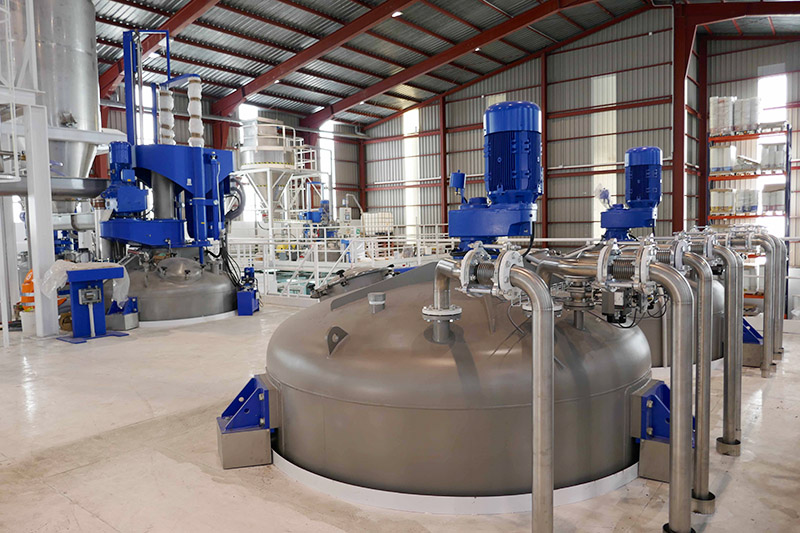
Thinning
Thinning is the process of increasing the viscosity of a liquid either by reduction, or by the addition of a thinning agent, typically containing starch. thinners, are substances which, when added in paints to increase its viscosity without substantially modifying its other properties, increase stability, and improve suspension of added ingredients.
Some thinning agents are gelling agents, forming a gel. The agents are materials used to thicken and stabilize liquid solutions, emulsions, and suspensions. They dissolve in the liquid phase as a colloid mixture that forms a weakly cohesive internal structure.

Colour inspection
The new colour is now compared against the standard colour. Both are applied thick as well as thin so that both the mass tone and the undertone of the colour can be seen. There must not be a difference between the new colour and the standard colour.
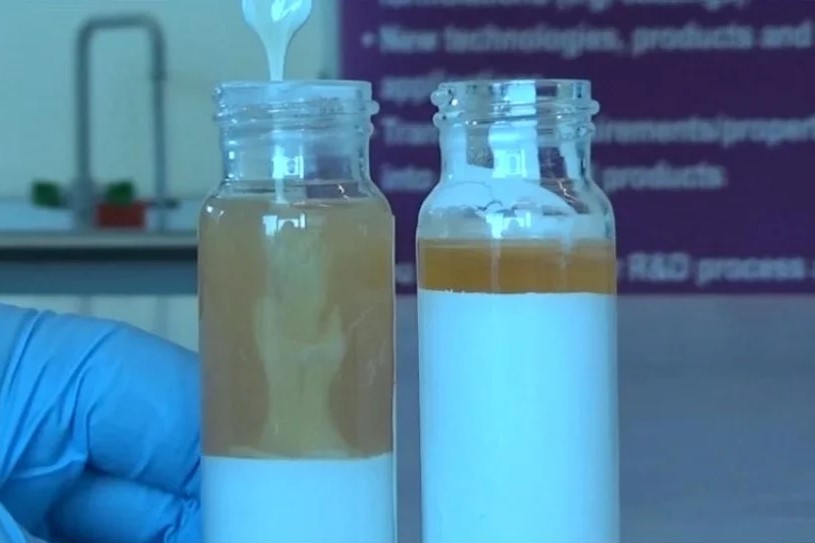
Stability inspection
In order to ensure that only quality products are sold, each batch is left to stand for a certain time in order to check the stability. After this period another laboratory check is carried out, and after approval the paint is filled into containers.
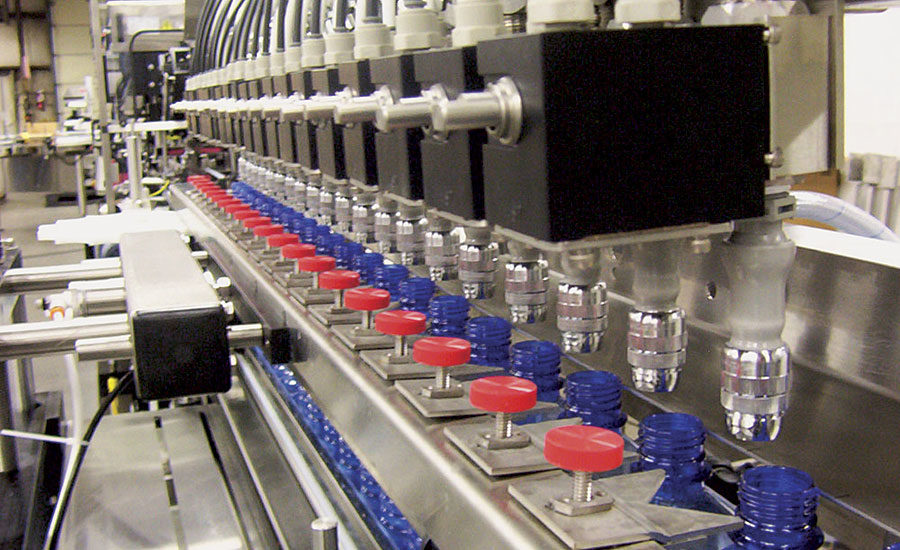
Packaging
Filling is an operation carried out in order to put the final finished product in buckets of different sizes. This packaging is a very significant step in complete process of manufacture of paints.
During canning two samples are taken; a retain sample, which is stored in case it is needed for future reference, and a Final Inspection sample. Special cleanliness must be observed during the filling process, particularly with regard to clean sieves and clean containers. Subsequently, the containers are labeled, packaged, and shipped in the shipping department.
